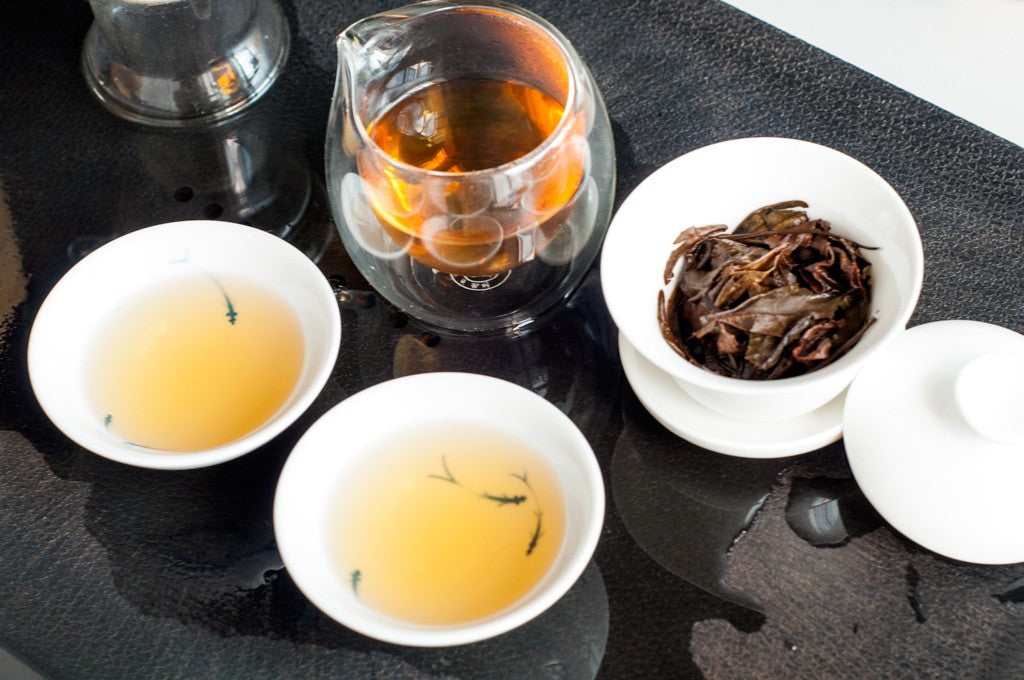
Brewing Methods for White Tea
The brewing methods for new white tea, such as Baihao Yinzhen(silver needle downy tips) and Bai Mudan(white peony), are basically the same as those for green tea. However, since white tea is not rolled, the tea juices are not easily extracted, so the steeping time should be relatively longer.

Generally, 3–5 grams of white tea can be placed in a colorless, transparent glass cup that has been rinsed with boiling water. Add 200 milliliters of boiling water. At the beginning, the tea buds float on the water's surface. After 5–6 minutes, some buds will sink to the bottom of the cup, while others will suspend near the upper portion of the tea infusion. At this point, the tea buds stand upright, crossing up and down, resembling stalactites; it is quite a spectacle. After about 10 minutes, the tea infusion turns golden yellow and can be enjoyed. During this time, you can enjoy the sight while sipping the tea, washing away worldly distractions and filling yourself with pleasant interest.

You can also use a white porcelain gaiwan. Add 3–5 grams of white tea and pour in 150 milliliters of 95°C hot water. Cover and steep for about 2 minutes, then pour the tea infusion into a serving pitcher.
If you prefer the light and delicate aroma and taste of white tea, you can pour out the tea infusion after steeping for just 20 seconds. For subsequent brews, gradually increase the steeping time.

Aged white teas, such as Gongmei and Shoumei, can be cooked:
Aged white tea can either be cooked directly or brewed a few times before cooking. Choose a suitable utensil for brewing tea, such as a ceramic teapot, iron kettle, silver pot, or glass teapot. Place a proper amount of aged white tea, such as Shoumei or Gongmei, into the pot and add room-temperature water. Heat it until boiling, and let it simmer for a few minutes. The cooking time can be adjusted based on personal taste. Pour the cooked tea into a fairness cup, then distribute it into smaller tasting cups for drinking.
*Note:*
New white tea tends to become astringent when cooked for too long, so it’s not recommended to cook new tea. Likewise, Baihao Yinzhen and Bai Mudan, which are relatively tender, are not suitable for cooking.

When cooking aged white tea, you can also add other ingredients, such as red dates, honey, goji berries, lemon, dried tangerine peel, fruits, or dried flowers (jasmine, chrysanthemum, rose, osmanthus, etc.). This adds a special flavor unique to each addition and can also provide certain health benefits. For example, red date white tea combines the heat-clearing, fire-reducing properties of white tea with the qi and blood-boosting effects of red dates. Mixing an appropriate amount of aged white tea with red dates helps to improve digestion and boost blood health, making it ideal for consumption during the autumn and winter seasons.
The cold-brew method is suitable for high-grade white buds, such as Baihao Yinzhen and Bai Mudan:

Find a suitably sized kettle or bottle. Add an appropriate amount of loose tea, with the quantity adjustable based on personal preference. Add sufficient cold water (filling the container is fine) and optionally some ice cubes. After 1–2 hours, it’s ready to drink, or you can refrigerate it overnight. By the next day, you’ll have a chilled, sweet, and mellow cold-brew tea.
Cold-brewed tea is very suitable for hot weather. However, for those with sensitive digestion or weak stomachs, it’s best not to drink too much cold-brewed white tea. It’s recommended for such individuals to drink more warm white tea instead.
